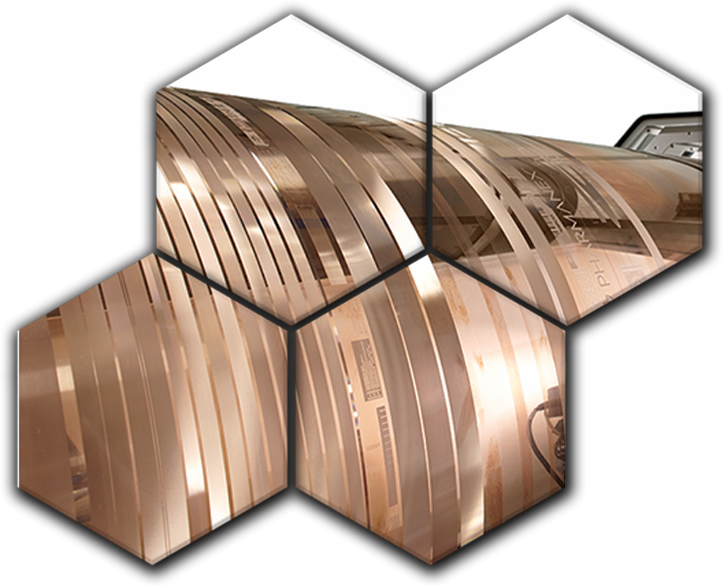LASER GRAVURE CYLINDER

A Laser Gravure Cylinder is a special laser-friendly cylinder that is compatible with the latest technology in digital gravure, where the use of computer-directed lasers cut cells of varying depths and sizes into the surface of cylinders.
USES
Magazines, newspapers, catalogs, wallpaper & various types of packaging, text on candles, and more.
APPLICATION
- Digital laser engraving for rotogravure
MANUFACTURING PROCESS
- A rotary gravure steel cylinder is electroplated with a homogeneous and even surface layer of copper or zinc. Heat conduction and convection of molten material must be reduced to a minimum during the gravure process, which is why galvanic plating is added to the zinc/chrome layers to match the surface structure and durability requirements.
- The image information is represented reservedmicroscopically small cell volumes and is engraved into the copper or zinc surface and that transfers the printing ink into the substrate.
- A thin chromium layer ensures a long lifetime under strongly abrasive conditions in the printing press. By using a doctor blade, only the amount of ink defined reservedthe cell size will be transferred.
- After print runs, the cylinder needs to be cleaned immediately to protect the image surface.
TECHNICAL PARAMETERS
Type: Seamless Shaft Sleeve
Base Material: Nickel, copper
Plating material: Engravable copper, then chrome
Surface Hardness: HV500/600/900
Sleeve wall thickness: 76 microns to 558 microns
Diameter: 80-600mm
Length: 100-5000mm
Engraved by: Digital Laster
LPI: 25-300
Washout: Solvent-based/Water-based
ADVANTAGES
- PRECISION: Direct laser micro-structuring with beam pointing accuracy of about lµm provides the benefit of higher machining rates, high resolution focusing and the added advantage of digital variation that provides flexibility where conventional engraving methods do
- UNIFORMITY: A laser beam operates as a non-contact tool and ensures consistency over the entire imaging surface of the cylinder, and this predictability and repeatability is a crucial advantage over electromechanical gravure with the diamond
- INK TRANSFER: With laser cylinders, control over cell geometry and surface texture makes it possible to generate completely new cell configurations that optimizes ink transfer characteristics and printability for individual color percentages, and tone value for each print This is essential for consistent, pinhole – free ink transfer with higher print gloss and lower print mottle, and works well with higher viscosity inks. Compared to traditional electro-mechanical engraving, laser engraving can save up to 30% ink consumption .
- VARIABILITY: Laser engraving allows for larger variability in cell size and shape with higher print density. Dynamical control of the laser beam diameter allows for the individual modification of cells’ width and depth prior to printing. Such variable cell shapes are not attainable with electromechanical engraving .
TIME: Because of the high repetition rate of the laser beam, digital laser engraving is about 17 times quicker than that of an electromechanical gravure process. Laser-engraved cylinders also reduce the influence of press printing speed on print quality whilst keeping stable tone values.
